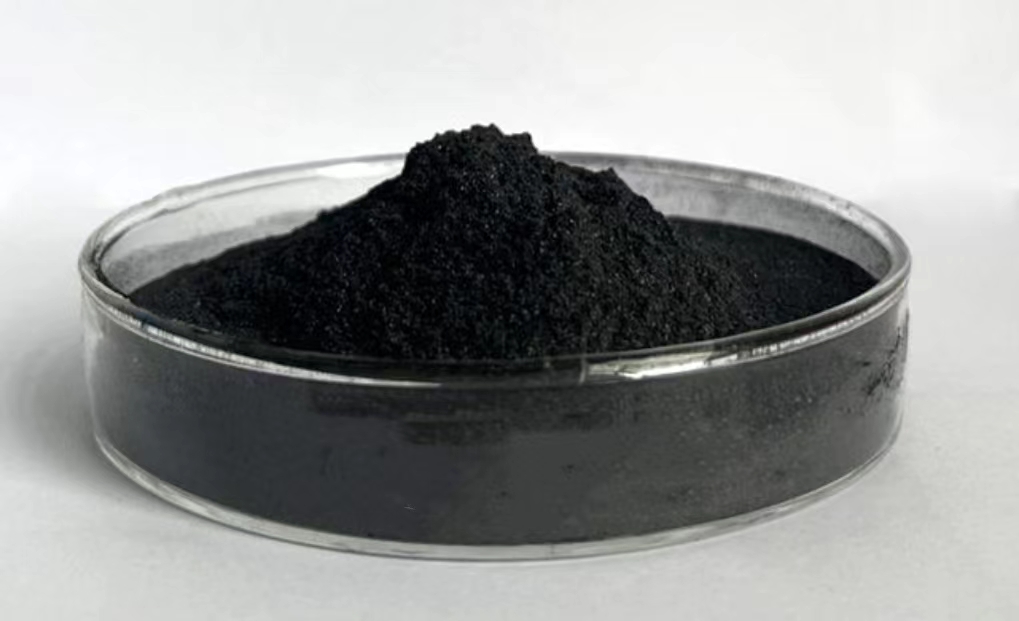Графит - это углеродный минерал, который используется в различных отраслях промышленности. Его уникальные свойства делают его универсальным соединением. В этой статье мы узнаем, что делает графит отличным смазочным материалом. Итак, не откладывая, приступаем.
Оглавление
ToggleЧто такое графит?
Структура графита
Графит - это кристаллическая форма углерода, плотно упакованная в структуру гексагональной решетки. Каждый слой гексагональной решетки состоит из плотно связанных атомов углерода, а все слои удерживаются вместе слабыми ван-дер-ваальсовыми силами, что придает графиту смазывающие свойства.
Природный и синтетический графит
Графит можно найти в естественных метаморфических породах, естественно сформированных графитом. Его плотность обычно составляет 2,09-2,23 г/см³, температура плавления - около 3652℃, а температура кипения достигает 4827℃. Поэтому природный графит обладает хорошей стабильностью при высоких температурах и экстремальных условиях.
Синтетический графит обычно изготавливается путем формования углеродных материалов, таких как нефтяной кокс, при высоких температурах. Например, получаемые продукты высокой чистоты и прочности широко используются в промышленности.
Свойства графита
Одним из выдающихся свойств графита является его электропроводность, что делает его очень подходящим для использования в батареях, электродах и других электронных устройствах. Делокализованные электроны в его слоях способствуют эффективному движению электронов.
Кроме того, превосходная термостойкость делает его пригодным для использования в высокотемпературных областях, таких как смазочные материалы и системы терморегулирования.
Наконец, такие свойства графита, как высокая механическая прочность, малый вес, устойчивость к высоким температурам и химическим веществам, делают его широко используемым в различных отраслях промышленности, таких как электроника, автомобилестроение и аэрокосмическая промышленность.
Графит в качестве смазки
На рынке представлены различные типы графитовых смазок. Вы когда-нибудь задумывались, почему графит используется в качестве смазки? Какие свойства делают его идеальным смазочным материалом?
Графит представляет собой кристаллический углерод со слоистой структурой. Все его слои состоят из атомов углерода, расположенных в гексагональной решетке.
Хотя эти атомы имеют прочные связи, силы, действующие между слоями, слабы. В результате они скользят друг по другу без какого-либо значительного сопротивления. Такая молекулярная структура графита делает его отличным смазочным материалом.
Среди других причин, делающих графит идеальным смазочным материалом, можно назвать следующие:
Без липкого остатка
В некоторых отраслях промышленности графит предпочитают смазочным материалам на основе масел. Одна из основных причин этого заключается в том, что он не оставляет липких остатков. В отличие от смазки и масла, графит является сухим смазочным материалом. Он состоит из тонких графитовые хлопья.
Кроме того, графитовые смазочные материалы не содержат масла или смазки. Поэтому они не притягивают пыль и грязь.
Высокотемпературная выносливость
Еще одним фактором, делающим его отличным смазочным материалом, является его высокотемпературная стабильность. Он может выдерживать экстремальные температуры, не теряя своих смазочных свойств.
Некоторые твердые вещества на основе графита смазочные материалы В состав входят аморфный диоксид кремния и дигидрогенфосфат алюминия. Их трибологические свойства обеспечивают защиту от износа.
В первую очередь такие смазочные материалы используются в отраслях, занимающихся ковкой металла и производством стали.
Долговечность
Смазочные материалы на основе графита не разрушаются даже в атмосфере высокого давления. Их эксплуатационные характеристики не снижаются на больших высотах и в суровых условиях.
Поэтому инженеры аэрокосмической отрасли также используют их для смазки колес, цепей, роликов, конвейерных лент и прокладок.
Самосмазывающиеся
Как уже говорилось выше, слои графитовой смазки скользят друг по другу. Таким образом, он становится самосмазывающимся веществом.
При нанесении на объект он образует тонкий слой. Благодаря самосмазывающимся свойствам его не нужно часто наносить.
Инженеры используют графитовую смазку в реактивных двигателях. Смазка помогает двигателям вращаться на высокой скорости, не создавая трения.
Масляные смазки не могут работать в таких ситуациях, поскольку в них отсутствуют самосмазывающиеся материалы.
Легкое смешивание с растворителями
Легко смешивать графит смазка с растворителями. Вы можете сочетать графит с испаряющимся растворителем, чтобы повысить его эффективность и расширить сферу применения.
Эту смесь можно наносить на любую машину. Растворитель испарится через минуту или две и оставит долговечную защитную пленку.
Эти смешанные смазочные материалы смазывают места, куда обычные масляные смазки не добираются. Как правило, они выпускаются в форме спрея.
Не реагирует на химические вещества
Графит не вступает в реакцию с большинством химических веществ благодаря своей стабильной неметаллической углеродной структуре. Поэтому смазочные материалы на основе графита можно использовать в атмосфере, подверженной воздействию химических веществ.
Коррозионные характеристики
В среде химических веществ он может противостоять коррозии большинства химикатов. Поэтому его можно использовать для смазки в агрессивных средах, таких как кислоты и щелочи.
Применение графитовых смазок
- Смазка из графита обладает рядом преимуществ. К ним относятся:
- Сухая графитовая смазка увлажняет конвейерные ленты, станки и литейные формы.
- В автомобильной промышленности инженеры используют эту смазку для увлажнения деталей двигателя.
- Горнорабочие также используют графитовые смазки для смазывания горного оборудования и машин.
- Смазка также используется в строительной промышленности для смазки тяжелой техники.
- Аэрокосмические инженеры используют графитовые смазки в деталях самолетов и механизмах шасси.
Преимущества графита как смазочного материала
Низкий коэффициент трения
Графит обладает чрезвычайно низким коэффициентом трения, что снижает износ движущихся частей. Это свойство минимизирует потери энергии в оборудовании, что повышает эффективность.
Химическая стабильность
Графит химически инертен, то есть не вступает в реакцию с большинством веществ. Такая стабильность предотвращает деградацию со временем, обеспечивает долговечность смазки и снижает потребность в техническом обслуживании.
Эффективность затрат
Графит зачастую более экономичен, чем синтетические альтернативы. Благодаря своей долговечности он требует менее частого повторного нанесения, что приводит к долгосрочной экономии средств.
Электропроводность
Электропроводность графита выгодна в некоторых областях применения, позволяя использовать его как в качестве смазки, так и в качестве проводника электричества, особенно в электронных компонентах.
Недостатки графитовой смазки
Низкая механическая прочность, например, в высокоскоростном оборудовании, легко изнашивается или отваливается.
Проблема накопления: будучи сухим смазочным материалом, он легко откладывается на поверхности механического оборудования и плохо поддается очистке.
Загрязнение окружающей среды, порошкообразные химикаты могут вызывать определенное загрязнение окружающей среды.
как использовать графитовую смазку?
Его можно наносить непосредственно на вращающиеся или скользящие части механического оборудования и использовать в зависимости от количества. Его также можно добавлять в оригинальную смазку для совместного использования. Наконец, графитовая смазка может быть непосредственно добавлена в воду или эмульгированную жидкость для использования.
Заключение
Учитывая все вышесказанное, можно сказать, что графит является выдающимся смазочным материалом. Он обладает многочисленными преимуществами по сравнению с обычными смазочными материалами на основе масел и консистентных смазок.
В основном графитовые смазки выпускаются в сухом виде и имеют несколько областей применения. Их свойства делают их практичным выбором для аэрокосмической, обрабатывающей и химической промышленности.

